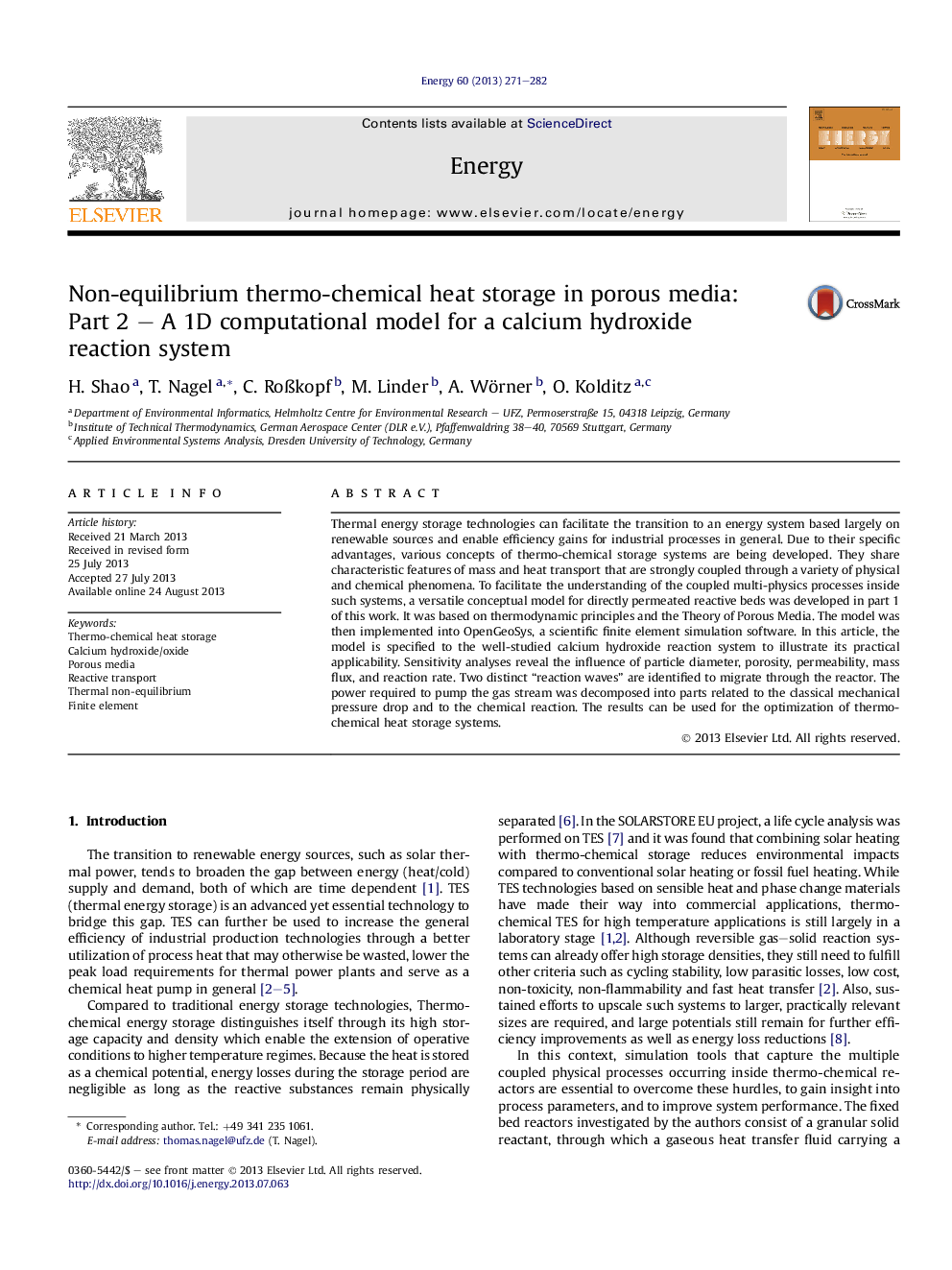| Article ID | Journal | Published Year | Pages | File Type |
|---|---|---|---|---|
| 1732627 | Energy | 2013 | 12 Pages |
Abstract
Thermal energy storage technologies can facilitate the transition to an energy system based largely on renewable sources and enable efficiency gains for industrial processes in general. Due to their specific advantages, various concepts of thermo-chemical storage systems are being developed. They share characteristic features of mass and heat transport that are strongly coupled through a variety of physical and chemical phenomena. To facilitate the understanding of the coupled multi-physics processes inside such systems, a versatile conceptual model for directly permeated reactive beds was developed in part 1 of this work. It was based on thermodynamic principles and the Theory of Porous Media. The model was then implemented into OpenGeoSys, a scientific finite element simulation software. In this article, the model is specified to the well-studied calcium hydroxide reaction system to illustrate its practical applicability. Sensitivity analyses reveal the influence of particle diameter, porosity, permeability, mass flux, and reaction rate. Two distinct “reaction waves” are identified to migrate through the reactor. The power required to pump the gas stream was decomposed into parts related to the classical mechanical pressure drop and to the chemical reaction. The results can be used for the optimization of thermochemical heat storage systems.
Keywords
Related Topics
Physical Sciences and Engineering
Energy
Energy (General)
Authors
H. Shao, T. Nagel, C. RoÃkopf, M. Linder, A. Wörner, O. Kolditz,
